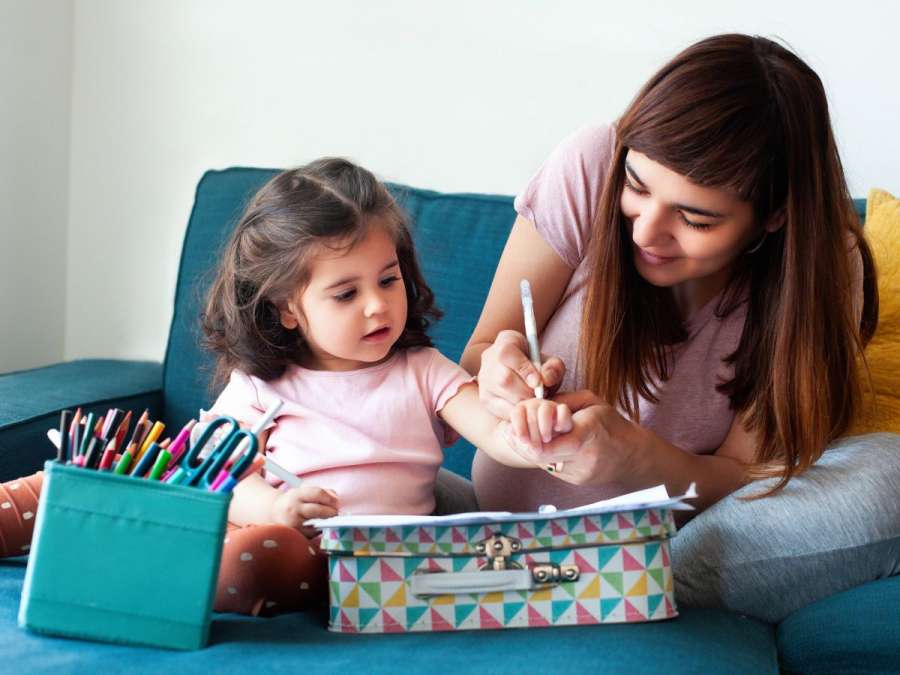Tantrums are a common and challenging part of childhood. Parents often handle the emotions that come with a child’s tantrum. Knowing how to handle these situations effectively can make a significant difference in both your child’s behaviour and your sanity. In this article, we will explore the art of handling tantrums in children—what to do, what to avoid, and how to build healthier emotional development.
Every parent or caregiver has faced the challenging spectacle of a child’s tantrum. This article provides a roadmap for understanding and navigating these intense emotional outbursts. While tantrums are a natural part of child development, a child’s way of dealing with overwhelming feelings or unmet needs, they can leave adults feeling helpless. This article sheds light on the reasons behind tantrums. It helps parents with strategies to address them, promoting a calm, constructive response that builds understanding and emotional growth in the child.
1. Understanding Tantrums
a. Tantrum Triggers
Various factors, including frustration, hunger, exhaustion, and the need for attention, can trigger tantrums. Recognising these triggers is the first step in handling tantrums.
b. Developmental Milestone
Tantrums are a part of a child’s development. They often peak between ages 2 and 3 as children struggle to communicate their needs and desires effectively.
c. Emotional Expression
Tantrums are a way for young children to express their emotions. They lack the vocabulary to articulate their feelings and resort to outbursts.
2. The Do’s of Handling Tantrums
a. Stay Calm
Your child’s tantrum is not a reflection of your parenting skills. Stay calm, composed, and patient. Your reaction sets the tone for how your child will learn to manage their emotions.
b. Validate Feelings

Acknowledge your child’s feelings, even if you can not meet their demands. Saying, “I understand you’re upset”, shows empathy and helps them feel heard.
c. Offer Choices
Provide limited choices when appropriate. This helps your child feel a sense of control and reduces frustration.
d. Use Distraction

Redirect your child’s attention to something positive or engaging. A change in focus can often defuse a tantrum.
e. Establish a Routine
Create a consistent daily routine with regular meal and nap times. Predictability can reduce the likelihood of tantrums triggered by hunger or fatigue.
3. The Don’ts of Handling Tantrums
a. Don’t Give In
Avoid giving in to unreasonable demands. Giving in reinforces the idea that tantrums lead to getting what they want.
b. Don’t Punish

Tantrums are not deliberate misbehaviour. Avoid punishment, as it may escalate the situation and frustrate your child.
c. Don’t Yell
Raising your voice in response to a tantrum can worsen the situation. It is essential to model calm behaviour for your child.
d. Don’t Ignore

While distraction can be helpful, ignoring your child during a tantrum may make them feel abandoned. Stay nearby to provide support.
e. Don’t Label
Avoid labelling your child as “bad” or “naughty” based on their behaviour. This can damage their self-esteem.
4. Strategies for Preventing Tantrums
a. Communication Skills
Teach your child simple words to express their feelings, like “sad,” “hungry,” or “tired.” Encourage them to use these words when upset.
b. Positive Reinforcement

Praise and reward good behaviour to reinforce positive actions and reduce the need for tantrums to get attention.
c. Teach Problem-Solving
Help your child develop problem-solving skills by asking questions like, “What can we do to solve this problem?” This encourages independence and coping strategies.
d. Consistency

Set clear boundaries and be consistent with consequences. Children survive in environments with predictable rules.
5. Coping with Public Tantrums
a. Remain Calm
Stay composed and avoid feeling embarrassed. Most parents have been there, and others understand.
b. Offer Comfort

If your child has a public tantrum, find a quiet place to soothe and comfort them. This reduces stimuli that may be contributing to the tantrum.
c. Be Prepared
Carry snacks, toys, or a comfort item when you’re out with your child. Having these can help prevent public tantrums.
6. When to Seek Professional Help
a. Extreme Frequency
If tantrums occur frequently and intensely, it may indicate an underlying issue. Consult a paediatrician or child psychologist for evaluation.
b. Physical Aggression

If your child becomes physically aggressive during tantrums, such as hitting or biting, seek professional guidance.
c. Regression
Regression in behaviour, such as loss of previously acquired skills, may indicate a deeper problem and should be addressed promptly.
Handling tantrums in children is an essential skill for parents and caregivers. Following the do’s and don’ts, you can navigate these challenging moments with patience and empathy, helping your child develop emotional regulation skills. Remember that tantrums are a normal part of childhood, and with your guidance, your child will learn healthier ways to express their feelings and needs.

